MTP® trunk cables are important in the deployment and upgrading of densely populated networks of fiber optics. These cross-connected cables are necessary for building a large number of optical fibers into a single cable of high capacity. Thanks to their engineered design, MTP® trunk cables are well-suited to the cost-effective, right-sizing, and high-speed data communication networks, which makes them critical components in the data centers and telecom infrastructure. As networking requirements become more and more complex, the inclusion of MTP® trunk cables facilitates organized cable management, minimizes the time required for installation, and leads to lower operations costs. The focus of this article is to comprehensively analyze their structure, advantages, and the contribution they make to the present modern style of connectivity.
What Are MTP® Trunk Cables and How Do They Work in a Data Center?
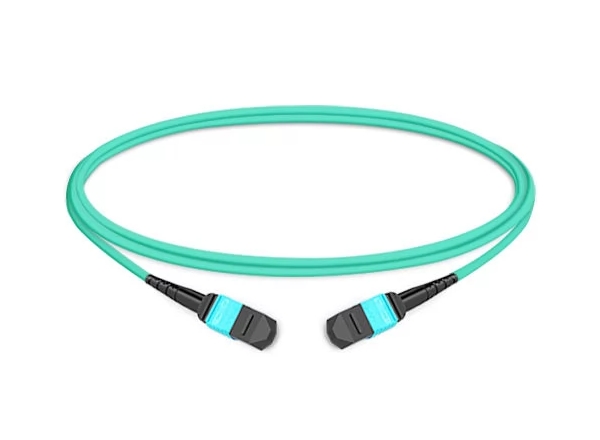
MTP® trunk cables integrate multiple optical fibers into one compact connector to facilitate easier data transmission, which is essential in some environments. They act as the foundation for fast connections within a data center by grouping many connections into one cable system, which is easy to manage. MTP® trunk cables are designed to be flexible when managed and also make management of the network infrastructure efficient. MTP® trunk cables make it possible to create systems that require fewer attaching points and operate at high speeds so that modern data centers can function with the required scalability.
How Does an MTP® Trunk Cable Function?
The system of interconnecting MTP® trunk cables is based on the principle of multi-fiber push-on/pull-off (MPO) connectors wherein the thumb’s action of the user is enabled to incorporate several optical fibers in one single MPO trunk connector housing so as to wire up and rewire data easily. MTP® connectors are able to accommodate between 8, 12, 24 and more number of fibers in a single MPO trunk. Hence, data transfer capability is greatly enhanced. This is made possible through the use of a pin-and-sleeve system, which secures and fixes each individual fiber within the connectors in its place accurately – exactly where each individual fiber has to be located – achieving complete signal precision and flawless connectivity.
Minimizing the requirement for many single interconnections mitigates the possibility of a loss of data and latency in the network and is ideal for operations in different types of data environments and speeds. They also tend to exhibit low insertion losses and high return losses, making it easier for them to be used with state-of-the-art ethernet technologies like the 40G and 100G standards. In the same manner, MTP-colored components assist in efficient identification for users, while the simple design of the connectors makes installation uncomplicated, meaning network solutions can be easily implemented without compromising on functionality.
Why Are MTP® Cables Preferred in Modern Data Centers?
Due to their capacity for efficient management of large amounts of fiber and to support 40G/100G Ethernet applications, MTP® cable systems are in high demand among modern data centers. Such designs take space efficiency to the next level, which is a key aspect of environments where the goal is to reduce rack space. MTP® cable systems provide room and characteristics flexibility so that a data center may be changed if a new technology comes along in the future. Their precision with which allergies and low insertion loss are achieved makes it possible to maintain a high degree of integrity in the signals passing through them, thereby providing the means of reducing the latency of networks and the performance of the entire system. Last but not least, the fast and simple snap-in systems enable easy installation and maintenance, making them cost-effective solutions as they make it possible to quickly deploy and reconfigure network systems.
What Types of Connectors Are Used in MTP® Trunk Systems?
The MTP® trunk system offers two connectors designed to fulfill various needs and guarantee highly efficient data transfer. Above connectors are some of the main types that connect the system:
- MTP® Connectors: These MTP® connectors are multifiber push on connectors, which come in 8, 12, 24 and 72 fibers. It enables the much required high density fiber interconnectivity in the networks of present day. It has also been built with the features of having low insertion and return loss during connections.
- LC Connectors: They take up much less space compared to other connectors while retaining compatibility with more ports. Hence their usage in data centers is quite common as it allows for better space optimization.
- SC Connectors: The ST connector is one of the oldest form factors still in use today featuring a push-pull design and a square shape that has very low insertion loss making it easy and reliable to use.
- ST Connectors: Another older type of a connection design is the bayonet design. ST connectors are cylindrical with a bayonet twist and lock coupling. ST connectors were largely used in older telecom systems but can still be relevant in a number of network setups.
- FC Connectors: FC connectors utilize a screw interface, making them a reliable connection type that specializes in use for connectors that monitor vibration. These connectors require tight and firm connections made possible by the screw mechanism.
Every connector category possesses unique merits which means it is essential to choose an appropriate one considering the requirements and framework of a data center. The choice of connector affects the performance, reliability, and scalability of the system, at best, considerably.
How to Choose the Right MTP® Trunk Cable for Your Application?
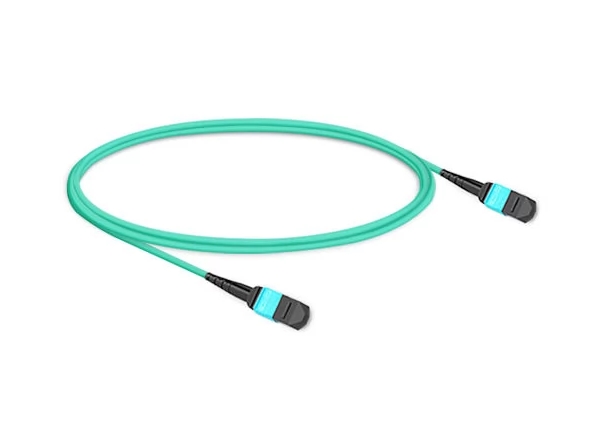
What Factors Should Be Considered for High-Density Networks?
- Fiber Type: Are the fibers single-mode or multi-mode, as these determine the bandwidth capacity and distance requirements?
- Connector Quality: Guarantees both low insertion and return loss for best performance.
- Cable Management: Proper arrangements would be done so as not to cause too much clutter and to ease repair processes.
- Scalability: A system’s capability to allow more capacity in the future greatly without affecting the previous construction.
- Loss Budget: Overall Assumed allowable loss considering all the joint(s) in order to preserve the transmission signal.
- Environmental Conditions: Made sure that the cables will be appropriate with the operating sites such as the temperature and humidity.
- Compliance Standards: Ampliance / Conformance with the safety and performance industry standards.
All these factors need to be critically looked into for effective, dependable and expandable network performance in heights’ density regions.
What Is the Difference Between Single-Mode and Multimode Fiber?
Single-mode fiber optic cables are meant for ministries of telecommunications as well as different high-speed data transfer needs. Having a small core, typically ranging from 8 to 10 microns, it enables only a single light mode to pass through. This allows for lower scattering of the signal and, hence, a wider bandwidth in longer distances. On the other hand, multimode fiber contains larger core diameters of 50 or 62.5 microns, allowing it to contain several light modes. This means for short-range applications, signal coupling is easier and cheaper, but it increases the attenuation and scattering of the signal, which is disadvantageous for long-range communication. Therefore, a selection between a single-mode and multimode fiber should be made based on specific distances and bandwidth essential for the application.
How Do Polarity and Installation Affect Performance?
The pole is important, especially in fiber optic systems where the designation of the path between the connectors is essential to ensure signals are not lost or interrupted. The right end of the cable is inserted into the transmit (Tx) plug, and the right end of the cable is inserted into the input receiver (Rx). Tx and Rx signals are often mismatched, which can cause performance reduction and increase the error rate in data transmission. Missing installation procedures are also important contributors to performance. Such installation methods served to restrict decreasing signal loss and ultimately preserve the required levels of attenuation by considering the appropriate minimum bend radius and providing a secure and clean connection. Following best installation practices can ensure stable and repeatable network performance, which is critical in high-speed data environments.
What Are the Benefits of Using MTP® Breakout Cables?
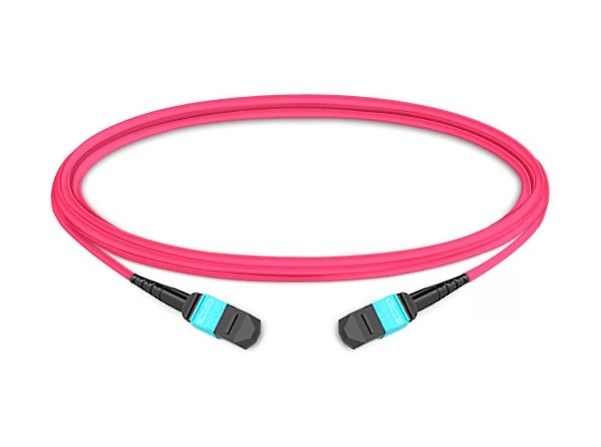
How Do Breakout Cables Enhance Network Flexibility?
Breakout cables increase the extensibility of a network, allowing multiple connections to endpoints through a single trunk cable. Such features ensure optimal use of existing facilities and make network cabling easier in areas with a high-density population. Scalability is supported since upgrading and reconfiguring can be easily done to accommodate the requirements of the network without the need for many wired connections. This enhances the overall flexibility of the network and reduces the outages caused during the changing of cables, all of which are critical in high-speed data transmission where the environment is often changing.
Why Are Breakout Cables Ideal for High-Bandwidth Applications?
The use of Breakout cables allows for increased levels of throughput as they are able to distribute multiple fiber channels from one MTP® connector, which is ideal for high bandwidth applications. The design of these cables enables parallel optical transmission, which is very important for networks that require large quantities of data to be transferred in a short time period. They increase airflow and reduce cable congestion, improving airspace and preventing fluctuations in system performance by cutting down the number of cable runs required. They also allow for a smooth transition with previously installed systems while also decreasing the number of failure points, making it an effective tool for low latency environments.
How Do MTP® Trunk Cables Support 144 Fiber Applications?
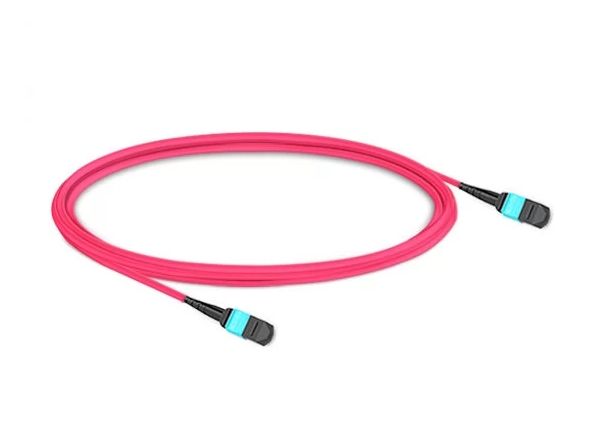
What Is the Role of 144 Strand Cables in Network Infrastructure?
A 144 strand cable serve as a indispensable element in the expansion of fiber optic network systems, as it allows for attachment of multiple fiber lines into a, single neat trunk. This enhances throughput of information. Such cables are important for the use of large data center systems and for bandwidth demanding services, due to significant expansion of network capacity and reduction of physical space occupied by the network.
What Are the Advantages of Using Bend-Improved Single-Mode Fiber?
Bend-improved single-mode (BISM) fibers have the potential to revolutionize fiber optic networks, especially in areas with challenging routing requirements. This next fiber type developed is said to have the capability to tolerate much sharper bends without compromising signal quality. Here are the key advantages:
- Flexibility: BISM fibers can be routed in spaces that are rather limited and at a smaller diameter as they do not volumetrically lose the signal. Most certainly their use case is for high density networking where they must be packed together.
- Attenuation: No surprise here. This fiber type offers the least amount of attenuation to BISM which ultimately leads to this fiber getting the most consistent IoT performance out of the others. If IoT devices needed help connecting the world, it is this fiber type that could do the trick.
- Reliability: Telecommunication firms that require instant service especially in critical areas understand what it means to have a BISM fiber and the reliability and assurance it comes with while utilizing it. Connecting devices has never been this easy.
- Cost: Generally speaking, cost is a concern for everyone installing fiber networks, thankfully BISM fibers allow for installation of smaller pathways which allow one to remove additional infrastructure thus saving on BISM installation and maintenance cost.
- Longevity: As a result of being highly resistant to wear and tear and damage, one can expect BISM fibers to last much longer when being strained, which translates to reduced maintenance as one does not need to worry about new rewires in a long time.
Fibers have never had a brighter tomorrow! BISM must minimize the amount of bandwidth lost while ensuring and improving quality.
How to Properly Install and Maintain MTP® Trunk Cables?
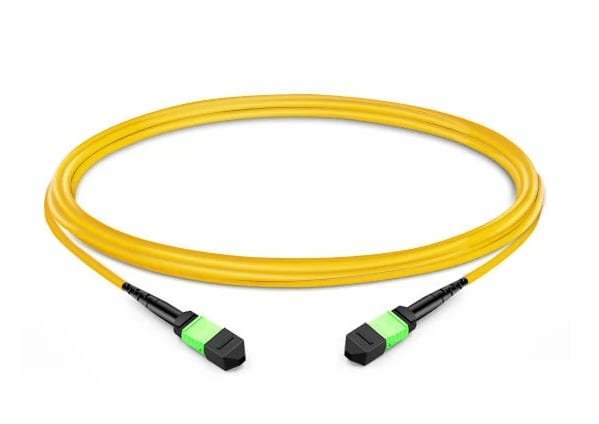
What Are the Key Steps in MTP® Trunk Installation?
Integrating MTP® trunk cables into a network structure entails attention to detail and following certain requirements in order to avoid problems with the performance. The following are the detailed guidance and factors to be considered in order to carry out an installation successfully:
- Prepare and Layout the Network: First thing one should do is to understand the need for the network and prepare a well-determined layout plan. Determine the main connection points and their paths, and ensure that there is enough space for proper routing of the cables without obstruction.
- Choose Suitable Cable Lengths: Touchpoints and their measurements are the standard determinants of the needed cable lengths, therefore The distances need to be measured correctly. However installation may sometimes require moving the cable around slightly, so ensure there is an allowance.
- Tidy Up Everything: Cleanliness of an area is key. Make sure that the area where installation is taking place is dust free and do not have contaminants that would obstruct the optical interconnections. The installed trunk cable should also be able to withstand the test of time on conditions of good ventilation.
- Cable Management Systems Need Installation: To aid with organizing the trunk cables, make sure strong management systems specify trays, conduits and catwalks are in place. This additional infrastructure can aid in assuring that inadequate bending or twisting will not occur and influence performance.
- Fix the MTP® Connectors: Under no circumstances should the MTP® connectors be the focus since the objective is to hold a clear view while fixing them in the specified connecting areas. Always ensure that they have the correct orientation to avoid Nay issues with the installation due to wrong placement. For alignment purposes during mating, look out for according color codes on keys or markings.
- Carry Out Polarity Checks: Ensure that the fibers in the connector have the right sequence and the right polarity. Wrong polarity can interfere with data communication, which would mean that more checking and adjustment would be required.
- Fasten and Identify Connections: Fasten the connections with the necessary fastening devices to prevent relative movement which can result in damage plumbing. Identify each connection with labels for ease of service and maintenance.
- Carry Out a Network Test on the Installed Works: Test the installed network systems, including the use of instruments for measuring risks such as insertion loss, return loss, and connectivity, including link integrity. Take corrective action on any issues identified during the tests that do not conform to expectations.
- Conduct a Fabrication Report: Create as-built documentation that includes in detail the scope of work done in the installation including floor plan, cable types, and testing performed. This is useful with regard to diagnosis and future upgrade of the network.
By adhering to these comprehensive steps, an efficient installation of MTP® trunk cables is accomplished guaranteeing reliable and high performance network services.
How do you ensure proper connector alignment and polish?
As the procedure begins, it is imperative to first carry out proper checks and take careful measures. To begin with, specialist alignment tools should be employed to check if the connectors are within acceptable tolerances. Scale inserts and other visual inspection devices can be useful. In addition to this, there is a need to have a machine that is used for polishing the surface and has the right settings as per the recommendations provided by the manufacturer. During the procedure, it will be very critical to ensure that pressure and movement are consistent so as to avoid uneven surfaces which may affect the signal being transmitted. Finally, the final inspection should be carried out using a fiber microscope to ascertain the connectivity end-face integrity while at the same time inspecting scratches or debris, which are potential barriers to connectivity.
What Maintenance Practices Are Recommended for Long-Term Performance?
In order to achieve long-term operation of MTP® trunk cables, it is essential to introduce a regular and constant maintenance program. Start with routine connector cleaning with the use of lint-free cloths and appropriate cleaning agents in order to avoid transmission impairment due to the accumulation of dust and dirt. Testing tools are periodically calibrated, and optical performance is tested to detect losses or faults prior to the occurrence of any negative impact on the system. Furthermore, make sure that there are detailed and updated reports for all maintenance deeds and test results so that cable status is monitored over time and assists future diagnosis difficulties. Lastly, check that all connections are tight and cable routing is not physically stressed, such as excessive pulling force or sharp angles, which will cause weakness in the structure of the cable.
Reference Sources
Frequently Asked Questions (FAQs)
Q: What are MTP trunk cables, and what are their applications in high-density fiber networks?
A: MTP trunk cables or MTP trunk assemblies are classified as multi-fiber assembly cables that are intended for high-density fiber networks. They offer a compact solution for interconnecting many fibers by integrating more fibers in a smaller space which reduces congestion and detains the network’s effectiveness. These cables are critical for data centers and telecommunication networks where high bandwidth and maximization of available room are of the essence.
Q: What are the distinctions between MTP and standard fiber connectors?
A: MTP connectors are a type of multi-fiber field installable connector. Push On connectors (MTP connectors) are also known as multi-fiber push-on (MPO) connectors. In short, they are high-density fiber connectors because multiple fiber strands can be interconnected at once; a single fiber standard connector usually adapts a single fiber; however, with MTP connectors, one is able to adapt up to 12, 24, or even 96 fibers, this considerably aids the functioning and efficiency of fiber optic cable installation.
Q: What are the similarities and differences between pinned and non-pinned MTP connectors?
A: Alignment pins are included in MTP connectors with pins to assist in matching the fiber cores when paired with their connectors. MTP connectors that are not pinned, however, are free of these pins, which allow them to connect to pinned ones, providing better securing. This difference is more critical in preserving the proper alignment of fibers and reducing signal attenuation in cases of high-density fiber networks.
Q: Do MTP trunk cables support the use of Um3, Um4, and Os2 fiber cables?
A: Yes, MTP trunk cables can support different types of fiber cables, which include Um3, Um4, and Os2. Their pick depends on the requirements of the network since each type of fiber has its suite of performance metrics, such as bandwidth and distance metrics.
Q: What does “24 fiber” mean in MTP trunk cables, and why is it important?
A: “24 fiber” is one of the specifications that describe the count of fibers contained within one MTP trunk cable. This MTP 24 fiber specification supports high data throughput, making it ideal in high-density networking environments where efficiency with space is in high demand.
Q: What overall length do MTP trunk cables have? More particularly, what does a ’100 ft’ cable bring to the table?
A: MTP trunk cables can differ with respect to the application needs. A “100 ft” cable, for instance, is sufficient to interconnect various parts of a network even over wide separations without much flexibility in designing the system with relation to the signal transmission quality degradation.
Q: Why should “Edge™ MTP® trunk” cables be preferred in the installation of networks?
A: Edge™ MTP® trunk cables are capable of performing optimally even in highly congested environments, meaning they work in a high pair count fiber optic cable. They are manufactured using very precise engineering and materials of high quality so that insertion loss is minimized, signal power integrity is preserved during transmission, and they are most appropriate for critical operations in the data centers.
Q: Fire issues are saying something, but why are plenum-rated MTP trunk cables used owing to that standard?
A: Plenum-rated MTP trunk cables were developed to avoid the spread of fire to particular spaces; their use is highly recognized in drooped ceilings, which facilitate air circulation. They are intended to inhibit the propagation of flames and to create low smoke emissions in order to promote safety in air-conditioned spaces.
Q: In what manner do the MTP connectors function when the APC polish is used?
A: The use of the APC polish applied on MTP connectors ensures minimum back reflection and insertion loss, ultimately improving the quality of the sign. This polish type is quite useful in high-density fiber networks where reliability and performance are of utmost importance.
Related Products:
-
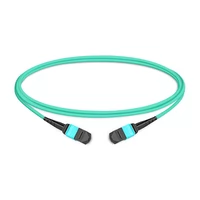 1m (3ft) 12 Fibers Female to Female Elite MTP Trunk Cable Polarity B LSZH OM3 50/125 Multimode Fiber
$35.00
1m (3ft) 12 Fibers Female to Female Elite MTP Trunk Cable Polarity B LSZH OM3 50/125 Multimode Fiber
$35.00
-
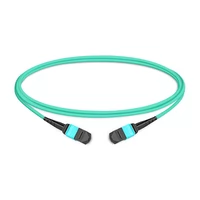 1m (3ft) 12 Fibers Female to Female Elite MTP Trunk Cable Polarity B Plenum (OFNP) OM3 50/125 Multimode Fiber
$36.00
1m (3ft) 12 Fibers Female to Female Elite MTP Trunk Cable Polarity B Plenum (OFNP) OM3 50/125 Multimode Fiber
$36.00
-
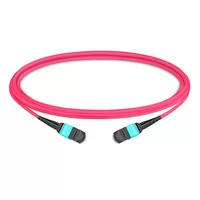 1m (3ft) 12 Fibers Female to Female Elite MTP Trunk Cable Polarity B LSZH Multimode OM4 50/125
$36.00
1m (3ft) 12 Fibers Female to Female Elite MTP Trunk Cable Polarity B LSZH Multimode OM4 50/125
$36.00
-
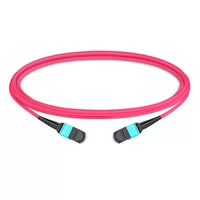 1m (3ft) 12 Fibers Female to Female Elite MTP Trunk Cable Polarity B Plenum (OFNP) Multimode OM4 50/125
$37.00
1m (3ft) 12 Fibers Female to Female Elite MTP Trunk Cable Polarity B Plenum (OFNP) Multimode OM4 50/125
$37.00
-
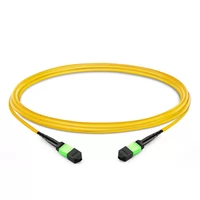 1m (3ft) 12 Fibers Female to Female Elite MTP Trunk Cable Polarity B Plenum (OFNP) OS2 9/125 Single Mode
$42.00
1m (3ft) 12 Fibers Female to Female Elite MTP Trunk Cable Polarity B Plenum (OFNP) OS2 9/125 Single Mode
$42.00
-
 1m (3ft) 12 Fibers Female to Female Elite MTP Trunk Cable Polarity B LSZH OS2 9/125 Single Mode
$42.00
1m (3ft) 12 Fibers Female to Female Elite MTP Trunk Cable Polarity B LSZH OS2 9/125 Single Mode
$42.00
-
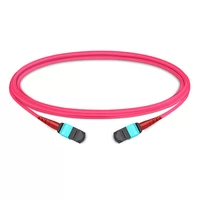 1m (3ft) 24 Fibers Female to Female Elite MTP Trunk Cable Polarity A Plenum (OFNP) Multimode OM4 50/125 for 100GBASE-SR10 Connectivity
$63.00
1m (3ft) 24 Fibers Female to Female Elite MTP Trunk Cable Polarity A Plenum (OFNP) Multimode OM4 50/125 for 100GBASE-SR10 Connectivity
$63.00
-
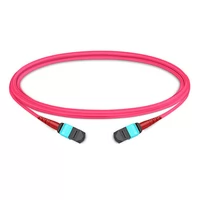 2m (7ft) 24 Fibers Female to Female Elite MTP Trunk Cable Polarity B Plenum (OFNP) Multimode OM4 50/125μm
$67.00
2m (7ft) 24 Fibers Female to Female Elite MTP Trunk Cable Polarity B Plenum (OFNP) Multimode OM4 50/125μm
$67.00
